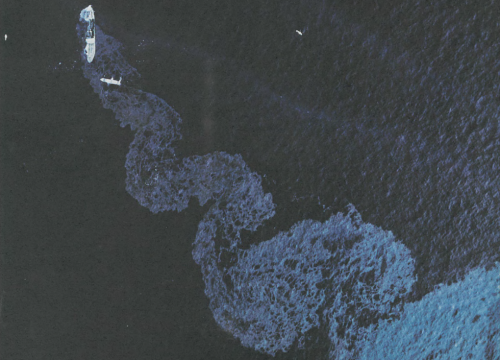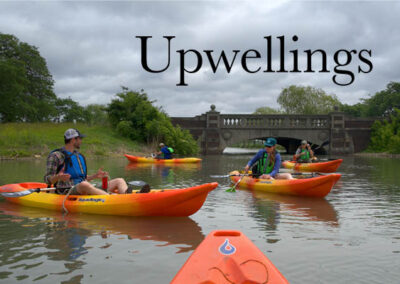
This article was originally published in the July 2025 Hazardous Material Transport Outreach Network (HazMATON) newsletter. Michigan Sea Grant is a member of the HazMaTON collaborative of specialists from the Great Lakes, Lake Champlain, Hudson River, and St. Lawrence River regions focused on reducing risks associated with oil and other hazardous materials transportation. Learn more at hazmaton.org.
Forty-eight years ago, just after Christmas 1976, a plastic card was dropped into the ocean off Nantucket, Massachusetts. Its purpose: to follow currents that might also be carrying oil from the leaking tanker Argo Merchant, which had run aground and spilled nearly 8 million gallons of oil. This formative wreck and its aftermath spurred scientists and resource managers to ask new questions about the effects of oil and other hazardous materials being spilled in the oceans and Great Lakes. This eventually led to the creation of the NOAA Office of Response and Restoration and a new emphasis on oil spill response equipment and techniques in oceans, rivers, and lakes.
Meanwhile, the drift card did its job. As winds blew the Argo Merchant’s leaking oil offshore, the card followed them — all the way into the Gulf Stream and the North Atlantic Gyre. This rotating system of currents cycles clockwise from the eastern shore of North America, across to western Europe, down along northern Africa, across to the Caribbean, and up again.
The card spent nearly 50 years on the move, potentially looping around the Atlantic Ocean multiple times, before an autumn storm ended its voyage. On October 22, 2024, Barbara Payne of the Isle of Coll, Scotland, discovered the red plastic card on the beach in a heap of storm-tossed debris. Her keen eyes helped close the loop on an unexpected journey across time and distance.
Meet Barbara and read more about the legacy of the Argo Merchant spill response in this excellent post from the NOAA Office of Response and Restoration.
Learn about Great Lakes oil spill response planning, clean-up equipment and techniques, hazard mapping, and research into new and emerging fuels through the Summer 2025 HazMaTON webinar series.


